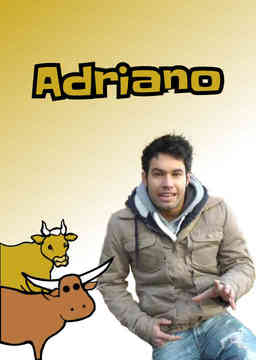









Difficulty:
 Intermediate
Intermediate
Italy
One way to tell if there might be life on another planet is through light. Special telescopes, by way of prisms, analyze and break down the light from distant galaxies into parts. Luca Parmitano, an astronaut of the European Space Agency, speaks to us from the Columbus International Space Station.
Difficulty:
 Intermediate
Intermediate
Italy
To reach outer space, the force of gravity has to be overcome, and that requires a certain "escape" velocity. That's where launchers come in.
Difficulty:
 Intermediate
Intermediate
Italy
Observing what happens when the air comes out of a balloon will help us understand how the launcher of a spacecraft works. An electrical propulsion engineer from ESA explains about different kinds of propulsion used in space exploration.
Difficulty:
 Intermediate
Intermediate
Italy
A simple experiment with a bicycle pump shows us how rocket launchers work. Even though rockets were invented for war and for fireworks, they are also used for peaceful purposes.
Difficulty:
 Intermediate
Intermediate
Italy
Astronaut Luca Parmitano talks to us from the Columbus European Space Laboratory. He explains why tadpoles can help us learn a lot about the weightless conditions of outer space.
Difficulty:
 Intermediate
Intermediate
Italy
This segment is all about so-called "Near-Earth Objects," called "NEOs" for short. They are comets, asteroids, metors and man-made objects, as well. What have they done in the past, and what might they do in the future?
Difficulty:
 Intermediate
Intermediate
Italy
This segment talks about the difference between an asteroid and a comet. Important work is being done with the Hera and Dart missions to study how to deviate an asteroid, thus avoiding possible great damage to our beloved planet
Difficulty:
 Intermediate
Intermediate
Italy
In August of 2014, the European Space Agency Rosetta probe reached the comet 67/P. This mission allowed for the collection of a great deal of data about comets. In fact, in this episode, a comet will be fashioned out of fairly common ingredients in a normal kitchen. That's pretty exciting.
Difficulty:
 Adv-Intermediate
Adv-Intermediate
Italy
Writer and scholar Fulvio Benelli shows us a part of Rome that tourists always flock to: Piazza Navona. But he tells us the fascinating story of how it came to be.
Difficulty:
 Adv-Intermediate
Adv-Intermediate
Italy
Fulvio shows us one of the most enigmatic monuments of all Rome, the Pantheon. He gives us some history, some interesting facts, and a legend, as well.
Difficulty:
 Beginner
Beginner
Italy
In 1749, King Charles of Bourbon (Charles III of Spain) or Carlo Terzo di Borbone, who was King of Naples at the time, commissioned an important campaign of archeological digs in an area near that city. Marika tells us the story.
Difficulty:
 Intermediate
Intermediate
Italy
After Stabiae was razed to the ground in a war, the Romans decided to build some luxury villas in the area. Luckily, some archeological digs led by archeologist Libro D'Orsi were effectuated in the 1950s, and 3 villas came to light.
Difficulty:
 Beginner
Beginner
Italy
The Villa San Marco is an amazingly well-preserved luxury villa from the Augustan period, with a wonderful panoramic view of Vesuvius and the gulf of Naples. Marika shows us around the four nuclei of the villa.
Difficulty:
 Intermediate
Intermediate
Italy
The name of the villa was inspired by the story of Dionysus who watched Ariadne while she slept. It was excavated first by the Bourbons but was buried again. Later in the 50s, digs were resumed and now, it can be visited in all its glory.
Difficulty:
 Intermediate
Intermediate
Italy
The last stop on the trip to Castellammare di Stabia is the seafront, called il lungomare in Italian. There's a great panorama, a lovely sea breeze, and it's a great place to just walk around. Marika mentions the famous natural spring water of Castellammare, both for thermal baths and for drinking.
Are you sure you want to delete this comment? You will not be able to recover it.